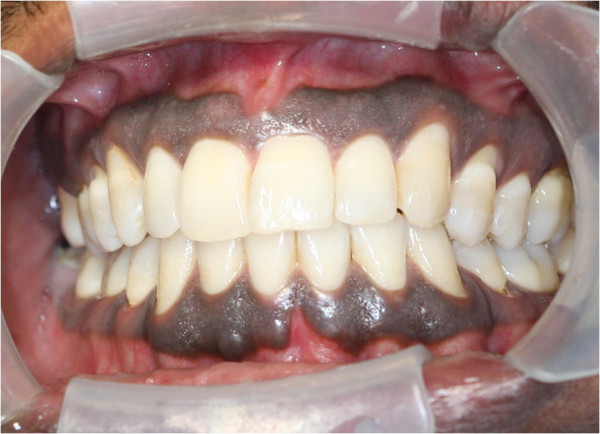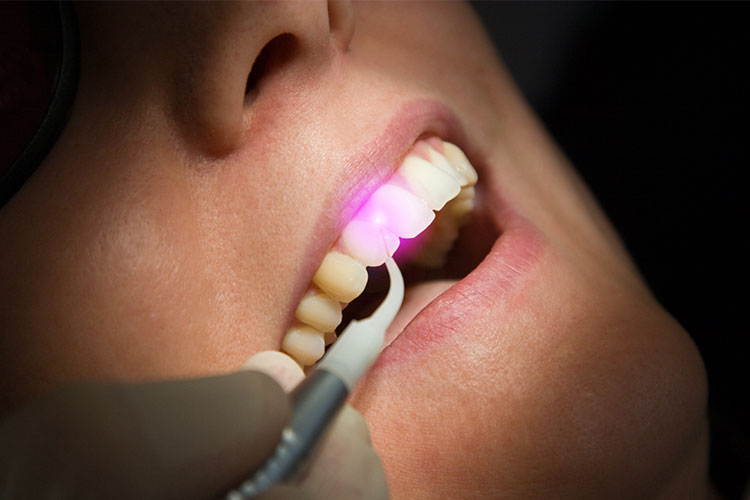Laser treatment is a popular gum treatment option for people who want to improve the health of their gums. Laser treatment can be used to treat several different gum conditions, including gingivitis, periodontitis, and skin conditions like physiologic pigmentation.
However, laser treatment for gums can be done in several different ways. Laser treatment can be used to remove excess gum tissue, kill bacteria, or help remove tartar buildup. Laser treatment can also be used to help stimulate the growth of new gum tissue.
How Does Laser Treatment for Gums Work?
In contrast to conventional treatments, laser therapy is not a stand-alone treatment.
- Your periodontist will use a laser to reach and remove the inflammatory gum tissue from the area around the root of your tooth during periodontal laser treatment.
- The plaque and tartar collected below and around your gum line are then removed. The rough areas on your tooth above and below the gum line will then smooth out using a separate instrument.
- Eliminating these rough areas reduces the possibility that your teeth and gums may draw more germs and develop bacterial illnesses in the future.
- Your mouth needs time to recover and repair after laser treatment. Your gums should be free of infection and able to re-tighten around your tooth throughout this healing phase, like a turtleneck that fits perfectly around your neck!
Be aware that not all dentists employ laser treatment. Those who want to use this treatment are trained on how to use lasers. This guarantees that they are using the right approach and are knowledgeable on how to employ various wavelengths.

Is Laser Therapy for Gum Painful?
Whether you’re thinking about getting laser gum treatment, you may be wondering if it hurts. The quickest response is that laser therapy is often painless. There are a few things to bear in mind, however.
- First of all, it’s critical to realize that laser therapy is a very new kind of medical intervention. As a result, there aren’t many long-term studies on its effectiveness. Nevertheless, the data that is now available points to laser therapy as a successful gum disease treatment.
- Second, it’s crucial to realize that laser therapy is a continuous process. Getting the desired outcomes usually takes many sessions.
- Third, temporary pain may result from laser treatment. You can experience tingling while receiving therapy. Your gums can be uncomfortable for a day or two after the procedure.
Overall, gum disease is safely and successfully treated with laser therapy. To determine whether this course of treatment is appropriate for you, talk to your dentist about it if you’re thinking about it.
Has Laser Therapy Any Side Effect?
The most common side effect of laser gum surgery is temporary discomfort. This is usually due to the heat generated by the laser and can be alleviated with over-the-counter pain medication. Other potential side effects include:
- Swelling: This is also a common side effect and usually lasts for a few days.
- Bleeding: There may be some bleeding immediately after the procedure, but it should quickly stop.
- Infection: Although rare, infection is a potential complication of any surgery.
- Damage to surrounding tissues: The laser can damage nearby teeth or gum tissue if not used correctly.
Overall, laser gum surgery is a safe and effective way to treat gum disease. However, as with any surgery, there are a few potential risks and side effects. Patients should discuss these with their dentist before undergoing the procedure of laser gum therapy.
Conclusion
There you have it. Now you know about physiologic pigmentation, laser therapy for gum, how it works, and its side effect. However, Gum laser therapy is very useful, and it has plenty of side effects; if you try it once, you will forget about traditional surgery.










